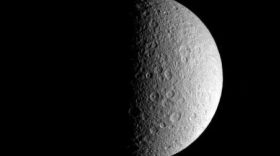If you're hearing this on Sunday, Saturn is at its closest point to Earth, and its rings appear as a straight white line due to their edge-on alignment — a rare event that occurs every 15 years during its equinox. Earth’s own equinox arrives Monday at 2:10 PM, marking the start of autumn in the Northern Hemisphere. This equinox often falls on the 22nd or 23rd because, as Kepler explained, Earth speeds up in its orbit when closer to the sun in January and slows down in July. That means winter is shorter than summer by about a week — a fact disguised by our calendar and the uneven placement of long and short months.

Play Live Radio
Next Up:
0:00
0:00
Available On Air Stations






